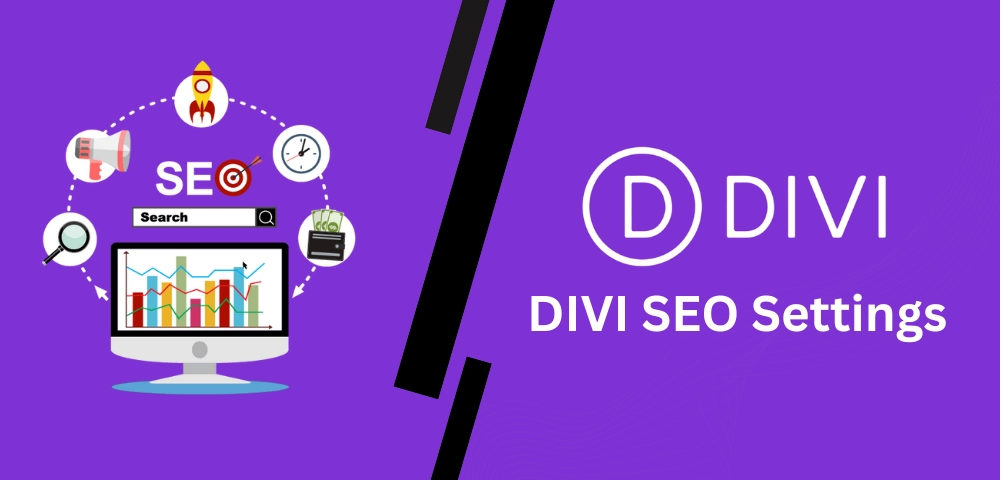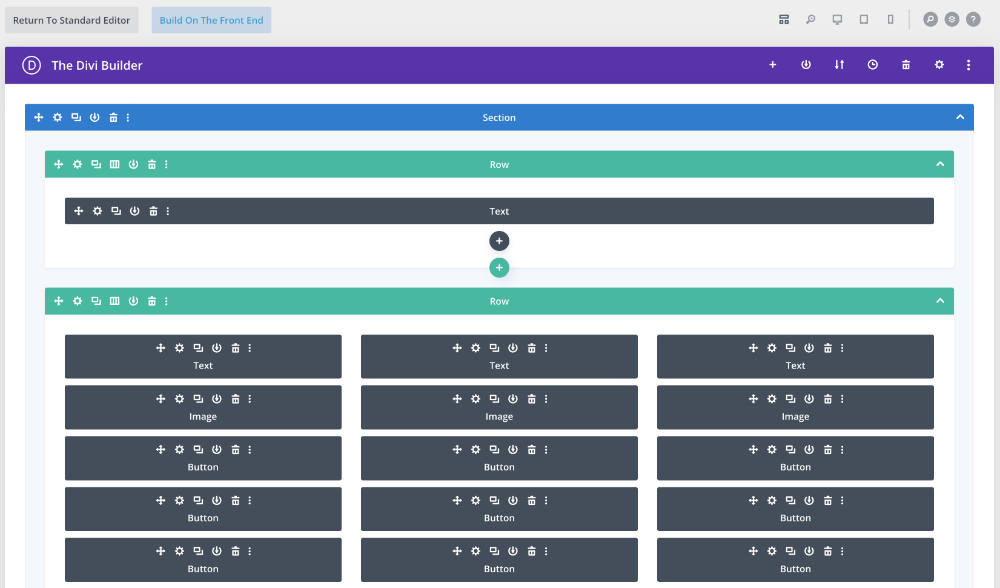With the right strategies in place, optimizing your Divi theme for SEO can significantly boost your website’s visibility and search engine ranking.
It’s crucial to leverage Divi’s built-in features and tools that cater to SEO while also implementing best practices tailored to your unique content.
In this post, you will discover actionable steps to enhance your site’s performance, improve loading speed, and create a more user-friendly experience, all contributing to better search engine optimization. Let’s explore into the methods you need to implement for optimal results.
Key Takeaways:
- Site Speed: Optimize your Divi theme for fast loading times to improve user experience and search engine rankings.
- Image Optimization: Use compressed images and proper alt tags to enhance SEO while maintaining visual quality.
- Mobile Responsiveness: Ensure your Divi theme is fully responsive to cater to a growing number of mobile users, which is crucial for SEO performance.
Understanding SEO Fundamentals
While exploring into optimizing your Divi theme, it’s imperative to grasp the fundamentals of Search Engine Optimization (SEO). At its core, SEO refers to the practices and strategies designed to enhance your website’s visibility on search engines like Google.
By understanding these fundamentals, you can ensure that the content you create resonates not only with your audience but also meets the criteria set forth by search engine algorithms.

Importance of SEO for Websites
For any website owner, the importance of SEO cannot be overstated. Implementing effective SEO techniques can significantly boost your site’s visibility, leading to increased traffic, higher conversion rates, and unprecedented growth over time.
In a digital landscape dense with competition, optimizing your site for search engines means you’re not just putting your content out into the world but ensuring it actually gets seen by the right audience at the right time.
Furthermore, investing in SEO is akin to future-proofing your website. Search engine algorithms are ever-evolving, and with each update, there are new factors to consider. By building a solid SEO foundation, you can adapt more readily to these changes, safeguarding your site’s rankings and relevance over time.
This proactive approach allows you to stay ahead of the curve and make informed decisions regarding your digital marketing strategy.
Key SEO Terminology
Any discussion about optimizing your Divi theme for SEO will inevitably involve a certain set of key terminology. Familiarizing yourself with these terms helps you better understand the principles behind SEO and how they relate to your website. Some vital terms include keywords, backlinks, and meta descriptions.
Each of these plays a critical role in how search engines evaluate and rank your site.
Another crucial term to comprehend is “on-page SEO.” This refers to the techniques that can be applied directly on your website, such as optimizing content, images, and internal linking structures.
Understanding how these elements interact gives you more control over how search engines perceive your site.
Embracing the nuances of SEO terminology not only empowers you in your optimization efforts but also aids in communicating effectively with fellow marketers or SEO professionals. By becoming versed in these imperative terms, you set a foundation that allows your Divi theme to perform at its best in search engine rankings.

Basic Divi Theme Settings for SEO
Little do many users know that your Divi theme settings can greatly influence your website’s search engine optimization (SEO). Configuring these settings properly is vital if you want to enhance your site’s visibility and improve its ranking on search engines. In this section, we will focus on the general theme settings and the optimization of your header and footer, which are crucial components in SEO implementation.
Configuring General Theme Settings
One of the first steps you should take when optimizing your Divi theme for SEO is to configure the general theme settings. This includes setting your website’s title and tagline, which are foundational elements that search engines use to understand what your site is about.
Ensure that your title tag contains relevant keywords that reflect your brand and the content you offer. Additionally, keep your tagline concise and descriptive; this not only provides context for search engines but also for your visitors.
Another important area to pay attention to is your Divi theme’s settings for your URL structure.
Make certain that you utilize permalinks that include keywords relevant to the content, as this makes it easier for search engines to index your pages effectively.
By refining these settings, you’ll establish a strong base for your site’s SEO efforts, ensuring that your content is both discoverable and aligned with your target audience’s search intent.
Optimizing Header and Footer
General optimization of your site’s header and footer is equally vital for your Divi theme’s SEO performance. The header typically contains vital elements such as your logo, navigation menus, and contact information, all of which can influence user experience and engagement. Make sure to use H1 tags appropriately for headings in your content, and employ H2 and H3 tags for subheadings. Incorporating keywords in these headings can help improve your site’s relevance in the eyes of search engines.
A well-structured footer can also contribute to your SEO strategy by providing links to important pages across your website. This not only enhances navigation for users but also allows search engines to crawl your site more effectively.
Furthermore, including a sitemap or a list of key pages in your footer can help search engines index your content faster.
By dedicating time to optimize your header and footer, you’re not just improving your site’s aesthetics but also laying the groundwork for a robust SEO framework.

Content Optimization within Divi
Now that you have your Divi theme set up, it’s crucial to focus on content optimization to enhance your site’s SEO performance.
Good content optimization not only helps search engines understand your content better but also improves the user experience.
For a comprehensive approach to improving your Divi SEO efforts, check out Divi SEO: The Ultimate Guide for 2024 [Checklist Included], which provides a wealth of insights to help you refine your strategy.
Using Proper Heading Structures
For optimal SEO performance, it’s imperative to utilize proper heading structures within your content.
Headings, such as H1, H2, and H3 tags, serve as a roadmap for both search engines and your audience. You should start with a single H1 tag for your main title, followed by H2 tags for section headings and H3 tags for subsections.
This hierarchy aids in organizing your content effectively and allows search engines to determine the main topics covered in your articles.
Additionally, well-structured headings enhance readability, making it easier for your visitors to navigate your content. This increases user engagement and helps to reduce bounce rates, both of which are favorable signals to search engines. By implementing a clear heading structure, you can make your content not only more appealing but also more SEO-friendly.
Incorporating Keywords Effectively
With the right keyword strategy, you can significantly impact your website’s visibility on search engines. Focus on incorporating relevant keywords naturally throughout your content, including in headings, body text, and metadata. Overstuffing your content with keywords can lead to penalties from search engines, so aim for a balanced approach where keywords complement your writing rather than distract from your message.
Keywords play a critical role in attracting organic traffic, but you should also prioritize user intent. Think about what your audience is searching for—this can guide you in choosing keywords that are not only relevant but also more likely to lead to conversions.
Enhancing Image SEO
With images playing an imperative role in your content, it’s vital to optimize them for SEO as well. Ensure that every image you use on your website is properly formatted with appropriate file names, alt tags, and descriptions. Descriptive alt tags not only help visually impaired users but also provide search engines with context about the image, improving your site’s overall SEO.
Image optimization can also enhance page load speeds, which is a decisive factor in SEO rankings. A website that loads quickly offers a better user experience, which can reduce bounce rates and increase time spent on your site. Therefore, strive for a balance between image quality and file size to ensure that your site remains fast and functional.
Image optimization is an ongoing process, so continually review and update your images as necessary to maintain your site’s performance and usability.
Technical SEO Considerations
Unlike many other themes, the Divi theme provides you with an array of customization options, but it’s necessary to consider the technical aspects of SEO as you optimize your website.
This involves implementing and fine-tuning various elements that influence how search engines crawl, index, and rank your site.
Addressing these technical SEO considerations can give your website the competitive edge it needs to perform well in search engine results pages (SERPs).
Implementing Schema Markup
An effective way to enhance your site’s visibility in search results is by implementing schema markup. This structured data helps search engines understand the context of your content, allowing them to display rich snippets — such as star ratings, reviews, and even product information — directly on the search results page.
By adding schema markup to your Divi theme, you can significantly improve your click-through rates and provide users with useful information right from the SERPs.
An easy way to implement schema markup in Divi is by using a plugin, such as Schema Pro, RankMath or Yoast SEO, which simplifies the process without requiring coding skills. You can select from various types of schema (like articles, products, or events) and configure them according to your site’s needs.
Don’t underestimate the power of schema; making your content more accessible and understandable to search engines can make a remarkable difference in your overall SEO strategy.
Ensuring Mobile Responsiveness
One of the critical components of both user experience and SEO is ensuring your site is mobile responsive. With the growing prevalence of mobile device usage, Google now prioritizes mobile-first indexing, meaning that the mobile version of your site is considered the primary version when determining your rankings.
The Divi theme naturally supports responsiveness, but you should still test your layouts and content to ensure everything displays correctly across various devices.
One important aspect of mobile responsiveness is the navigation structure; ensure that buttons and menus are easily tappable on smaller screens. You should also consider optimizing images for faster loading times on mobile devices, as users tend to abandon sites that load slowly.
Regularly testing your site’s responsiveness with tools like Google’s Mobile-Friendly Test can help you identify and fix potential issues.
Plus, prioritizing mobile responsiveness can enhance user engagement. A seamless browsing experience reduces bounce rates and encourages users to spend more time on your site, which are positive signals for SEO. Ensure that all elements, including images, videos, and forms, are optimized for mobile users to create a holistic experience that appeals to your audience.
Improving Page Speed
With page speed being a prominent ranking factor in Google’s algorithm, it’s crucial to optimize your Divi theme for swift loading times. A slow-loading website can frustrate users, leading to high bounce rates and even lower conversions.
To improve page speed, consider implementing techniques like image optimization, a content delivery network (CDN), and minimizing HTTP requests. Make use of caching plugins specifically designed for Divi to further enhance loading times.
It’s important to remember that page speed not only affects your search engine rankings but also influences user satisfaction. You can evaluate your site’s speed using tools such as Google PageSpeed Insights or GTmetrix to pinpoint specific areas for improvement. By continually monitoring your site’s performance and making necessary adjustments, you can deliver a fast and enjoyable experience to your visitors.
To wrap up
From above, it is clear that optimizing your Divi theme for SEO is crucial for improving your website’s visibility and performance in search engine results.
By implementing strategies such as customizing titles and meta descriptions, optimizing images for faster load times, and ensuring mobile-friendliness, you can significantly enhance your site’s SEO capabilities.
Additionally, utilizing Divi’s built-in SEO settings and well-structured content can help you create a better user experience, which is increasingly favored by search engines.
As you continue to refine your approach, remember that SEO is an ongoing process. R
egularly updating your content, analyzing your traffic and conversions, and staying informed about the latest trends in search engine algorithms will empower you to maintain and improve your rankings.
By dedicating time and effort to these optimization techniques, you can elevate your Divi theme and make it a powerful tool for engaging your audience and driving sustainable growth for your online presence.
FAQ
Q: What are the key SEO settings I should configure in the Divi Theme?
A: To optimize your Divi Theme for SEO, you should focus on several key settings. First, ensure that your site has a descriptive and concise title tag and meta description for each page, which can be set in the Divi Builder’s page settings. Additionally, make use of header tags (H1, H2, H3) to structure your content logically, making it easier for search engines to understand. You should also enable breadcrumbs in the theme options to enhance site navigation and improve the user experience, which is beneficial for SEO. Lastly, integrating structured data markup through appropriate plugins can help search engines better understand your content and improve your site’s visibility in search results.
Q: How can I improve page speed and performance of my Divi website for better SEO rankings?
A: Page speed is a crucial factor for SEO, and there are several ways to optimize your Divi website performance. First, utilize the built-in performance optimization features within Divi, such as Minify CSS and JavaScript files and enable “Static CSS File Generation.” Additionally, consider optimizing your images by compressing them and using the appropriate file formats like WebP. Implementing a caching solution through plugins such as W3 Total Cache or WP Rocket can significantly improve load times. Lastly, choose a reliable hosting provider and consider using a Content Delivery Network (CDN) to further enhance delivery speed across different geographic locations.
Q: How can I enhance content SEO when building pages with Divi?
A: To enhance content SEO while using the Divi Theme, focus on creating high-quality, engaging, and keyword-rich content. Start by conducting keyword research to identify relevant keywords for your niche and incorporate them naturally into your headings, subheadings, and body text. Make sure your images have proper alt text and descriptions that include your target keywords. Use Divi’s built-in modules, such as the blurb and call-to-action, to create clear and persuasive content layouts that encourage user interaction. Regularly update your content to keep it fresh and consider using Divi’s blog module to maintain a consistent blogging schedule, as fresh content can positively impact SEO rankings.

